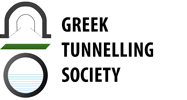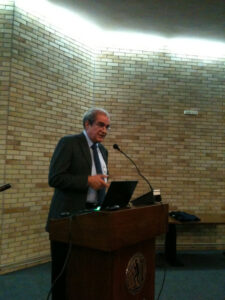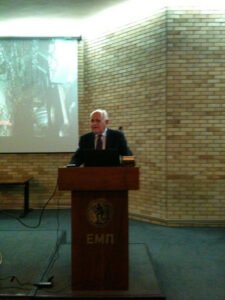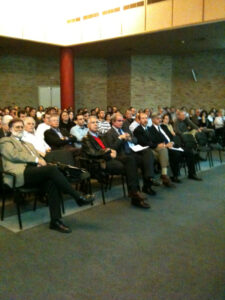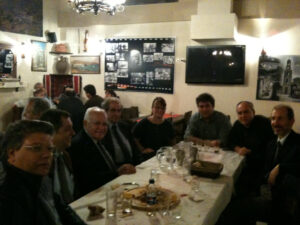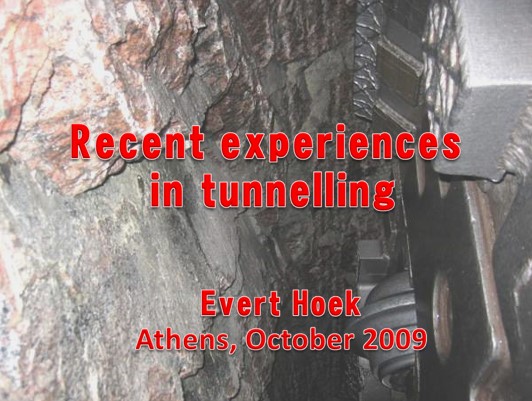Some recent experiences in underground excavation engineering
Dr. Evert Hoek
On the occasion of the completion of 20 years of involvement of the prominent Canadian Consultant E. Hoek with underground projects in the Greek area, The Greek Tunnelling Society has organized an event in his honour on Monday, October 26 at 18.00 in the Ceremonial Hall of the NTUA (Zografou Campus). The personality and work of E. Hoek is known to a large part of the Greek Engineers and Geologists involved in underground projects.
As part of the event, E. HOEK will deliver a speech in which he will present recent developments in important and difficult underground projects around the world, in which he was actively involved, and specifically:
a) In the Hallandsas Tunnel in Sweden
b) In the Yacambu – Quibor Tunnel in Venezuela
c) In the Seymour Capilano Tunnel, in Vancouver, Canada
d) In the Olmos Tunnel, in Peru Also, the project under study ‘’Deep Underground Science and Engineering Laboratory’’ in South Dakota, USA, in which E. Hoek is Chairman of the Design Review Committee, will be presented. This project foresees the opening of at least three underground chambers of 60 m in diameter at a depth of 1500 m below the ground surface.
A short reception - catering will follow in the vestibule of the Ceremony Hall.
Abstract and Presentation
During the past decade there have been significant advances in our understanding of rock mass behaviour and these have enabled us to open some new windows of understanding in tunnelling and underground excavation design. Many of these advances have come from the recognition that traditional classification based methods for estimating rock mass properties, typically based on six empirical parameters, are no longer adequate for predicting the behaviour of rock masses involved in very large projects. In particular, the requirement to exploit low grade mineral deposits has resulted in the development of huge open pit and underground caving mines where an understanding of the rock mass behaviour is critical to the success of these operations. In response to these challenges a serious effort has been made to develop numerical models that can be used to analyse the fundamental behaviour of jointed rock masses without the need for rock mass classifications. The most advanced of these models is the Synthetic Rock Mass developed by Itasca and a description of this powerful tool and of other numerical approaches being developed will be presented in the lecture. The application of these numerical methods in tunnel engineering will be discussed in terms of a number of recent projects and excavations that are being designed or under construction.
Biographical Data
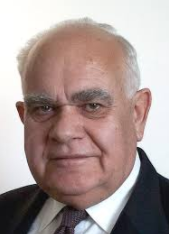 Evert Hoek graduated in mechanical engineering and became involved in the young science of rock mechanics in 1958 when he started working in research on the problems of brittle fracture associated with rockbursts in very deep mines in South Africa. His degrees include a PhD from the University of Cape Town, a DSc (Eng) from the University of London and honorary doctorates from the Universities of Waterloo and Toronto in Canada.
Evert Hoek graduated in mechanical engineering and became involved in the young science of rock mechanics in 1958 when he started working in research on the problems of brittle fracture associated with rockbursts in very deep mines in South Africa. His degrees include a PhD from the University of Cape Town, a DSc (Eng) from the University of London and honorary doctorates from the Universities of Waterloo and Toronto in Canada.
He is a Fellow of the Royal Academy of Engineering (UK) and a Foreign Associate of the US National Academy of Engineering and a Fellow of the Canadian Academy of Engineering. He spent a total of 15 years as an academic at the Imperial College of Science and Technology in London and at the University of Toronto, 12 years as a Principal of Golder Associates in Vancouver and the last 15 years as an independent consulting engineer based in Vancouver, Canada. His consulting work has included major civil and mining projects in 35 countries around the world and has involved rock slopes, dam foundations, hydroelectric projects, underground caverns and tunnels excavated conventionally and by TBM. He is currently Chairman of an Advisory Board, reporting to the US National Science Foundation, on the design of a series of underground chambers for the Deep Underground Science and Engineering Laboratory project. These caverns will be approximately 60 m in span at a depth of 1500 m below surface in the Homestake Mine in South Dakota.
Date: 26 Ocotober 2009, 18:00.
Venue: Main Hall, National Technical University of Athens, Zografou Campus
